09:00 – 09:30
Aim, Contents, Learning outcomes
Organization
Activity: Introduce to the topic
#1. Welcome participants, introduce the aim, contents and the learning outcomes of this module
Note: Present slides number 1 to 5
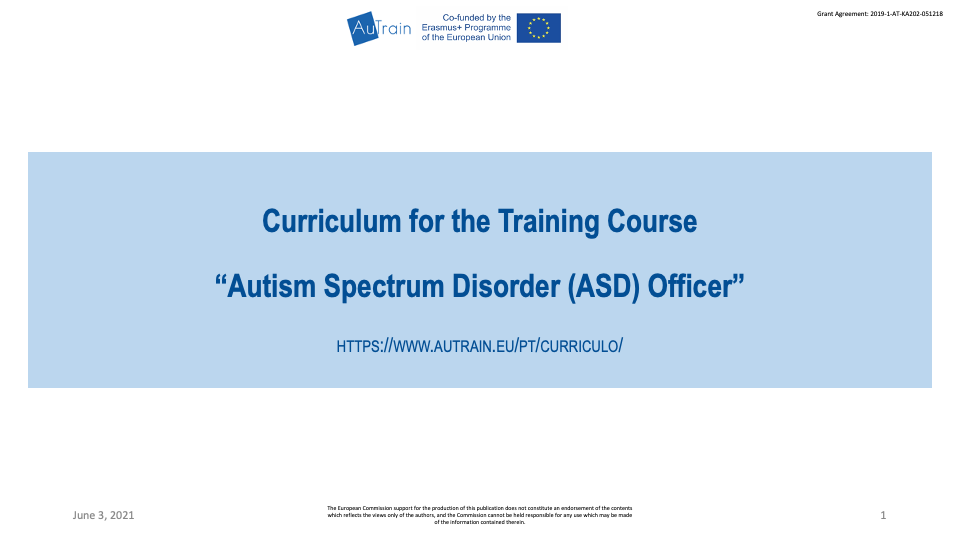
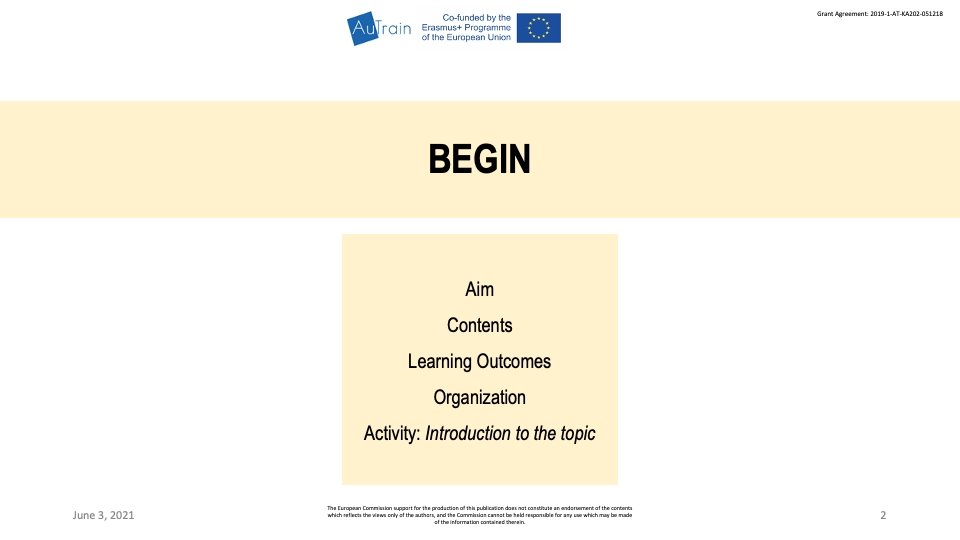
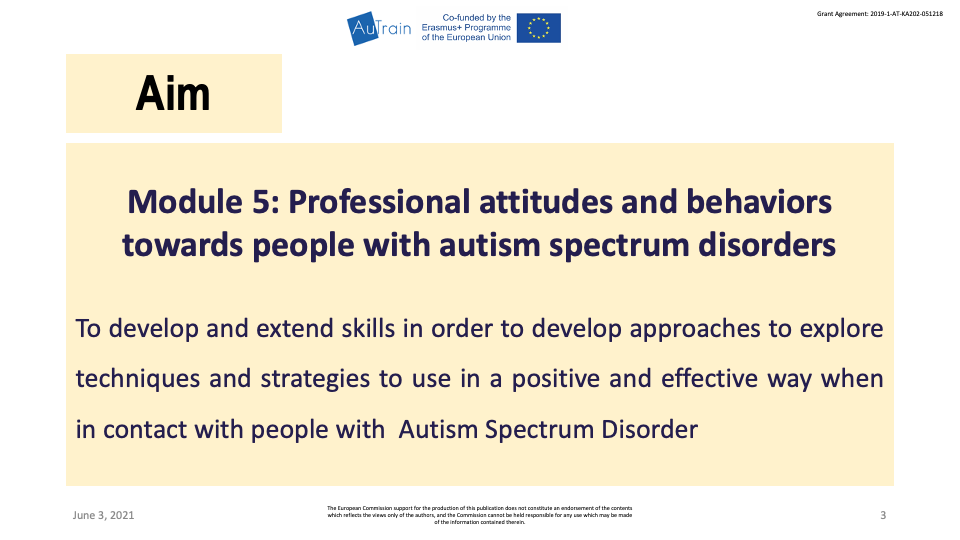
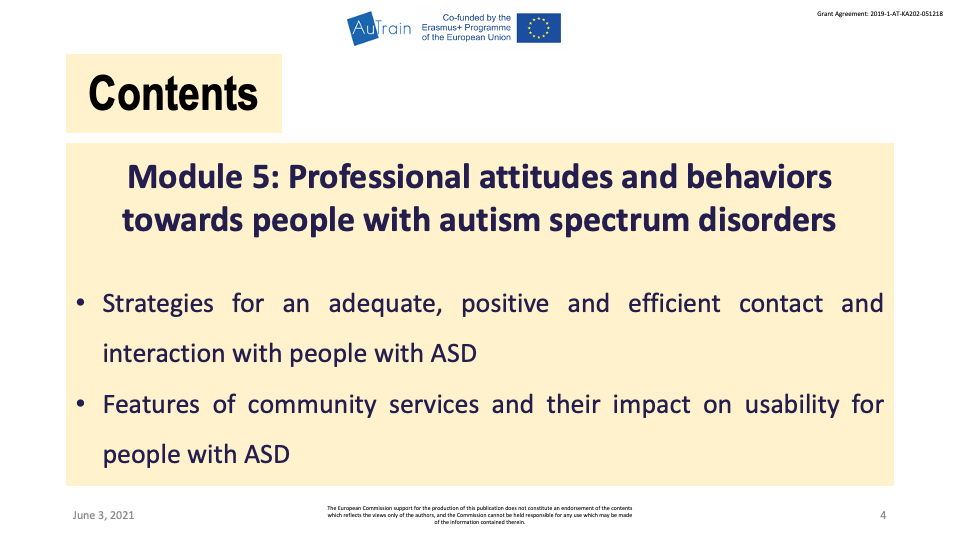
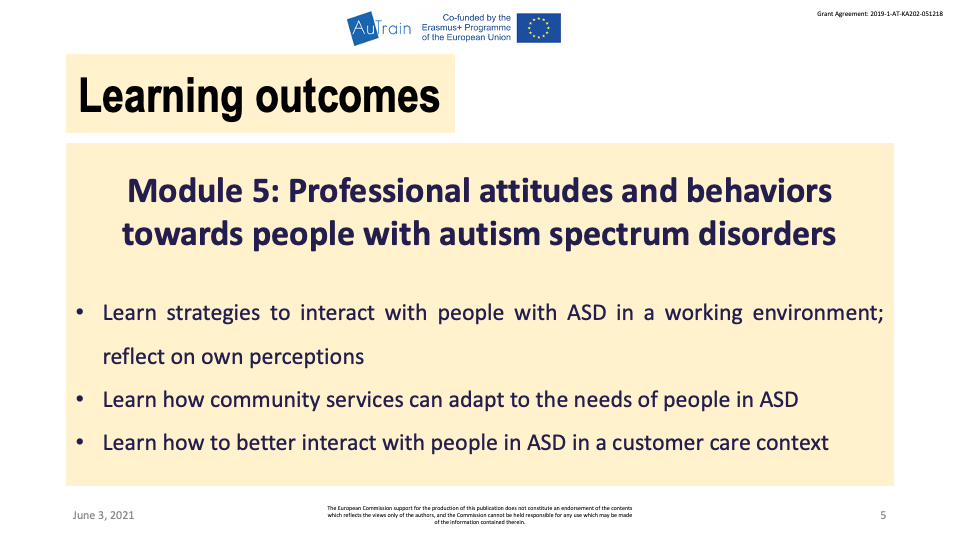
Aim
This module aims to develop and extend skills in order to develop approaches to explore techniques and strategies to use in a positive and effective way when in contact with people with Autism Spectrum Disorder.
This first part aims to make a brief introduction to ASD and present the benefits of working with people with ASD.
This part also aims to give tips for creating an autism-friendly work environment.
Contents
- Strategies for an adequate, positive and efficient contact and interaction with people with ASD
- Features of community services and their impact on usability for people with ASD
Learning outcomes
- Learn strategies to interact with people with ASD in a working environment; reflect on own perceptions
- Learn how community services can adapt to the needs of people in ASD
- Learn how to better interact with people in ASD in a customer care context
#2. Plan with participants’ comfortable break times throughout the module and instruction adaptations, if needed
Note: Present slides number 6 and 7
Organization
Present the overview schedule of the session and suggest a 30 minutes break or two breaks of 10 minutes each. Let the group decide.
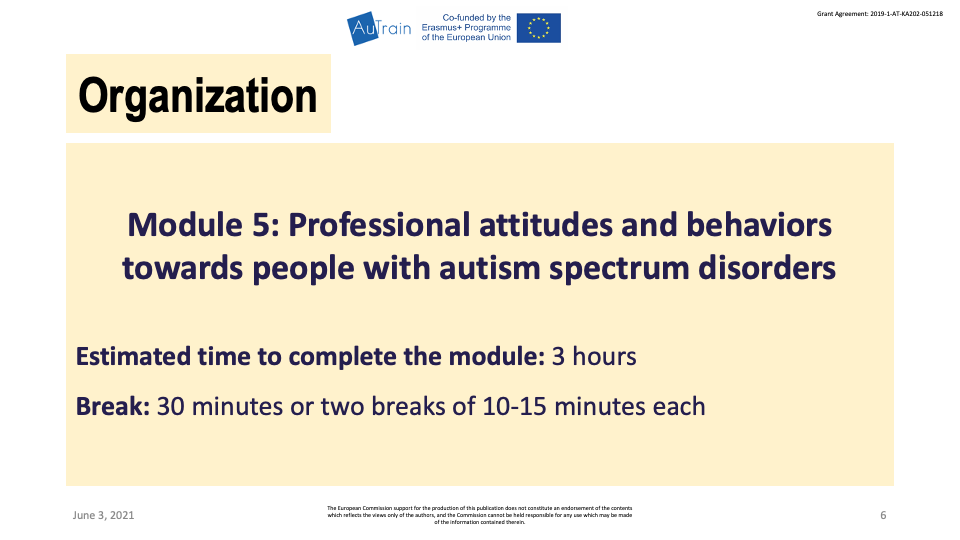
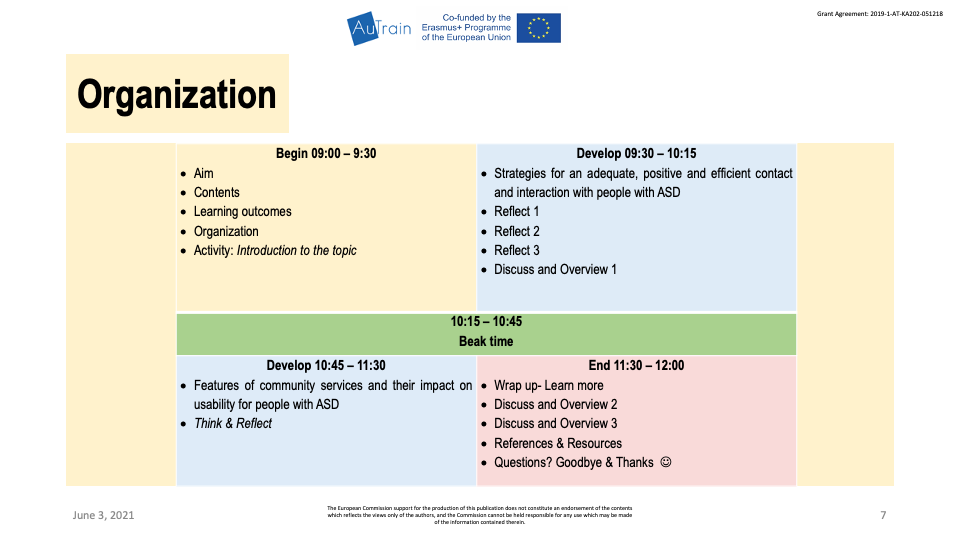
#3. Introduce and develop the Activity Introduction to the topic
Note: Present slide number 8
This first part aims to make a brief introduction to ASD and present the benefits of working with people with ASD. This part also aims to give tips for creating an autism-friendly work environment.
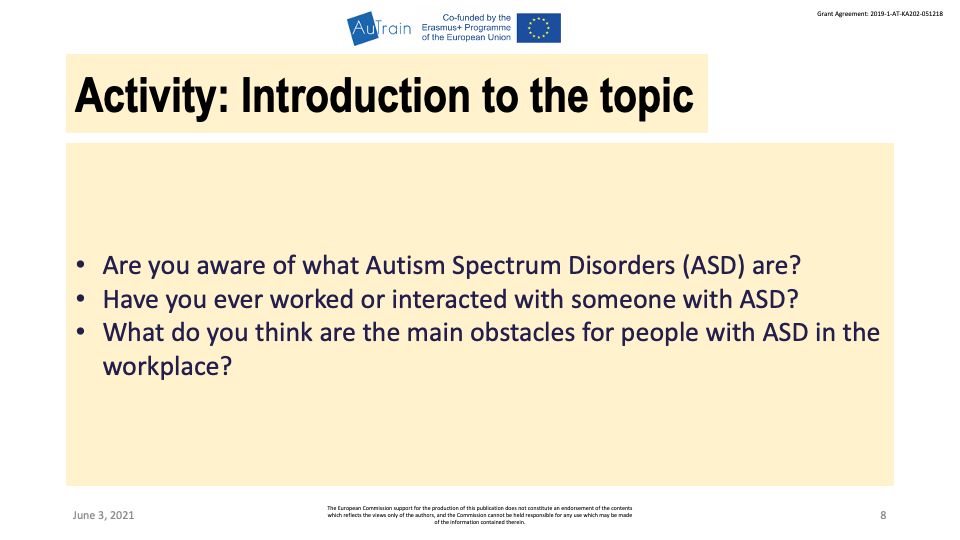
Read out loud the questions for introduction the topic and discuss it with the participants:
- Are you aware of what Autism Spectrum Disorders (ASD) are?
- Have you ever worked or interacted with someone with ASD?
- What do you think are the main obstacles for people with ASD in the workplace?
Contents to discuss:
- Introduction to signs and symptoms of ASD (abstract concepts, anxiety, understanding other points of view, executive functioning, narrow range of interests, misinterpretation of social cues, conversation and body language, sensitivity to strong smells, bright lights and loud sounds, discomfort with change) – Analyze the benefits of working with people with ASD (special talents, skills, diversity of thought).
- Analyze the benefits of working with people with ASD (special talents, skills, diversity of thought).
- When interviewing someone with autism, employers should focus on whether the individual is capable of doing the job. Managers should pay attention to the person’s abilities, rather than any perceived limitations due to their autism.
- Ways to embrace autism (get to know your employee with autism, learn your employee’s unique strengths and challenges, orient employees and train them on their specific job duties, foster a welcoming and supportive environment, maximise your company’s existing support systems, give clear direction and performance feedback);
- tips on how to manage autism in the workplace (time management, analyze the company’s structure and conduct policy, stress management, pre-determined routine);
- communication practices for interacting with people with ASD (practice communication skills, establish connections with others);
- adjustments for employees with autism (use a calm tone of voice, practice your anger management techniques);
- useful techniques (weekly charts, color-coded system, prioritize tasks, use visual supports, checklists)
There are a wide variety of ways that businesses can support their employees with autism. For starters, employers must have a comprehensive understanding of what autism is and what it looks like in the workplace. Companies also have to learn how to manage and reasonably accommodate employees with autism. They also need to ensure other employees know how to work with someone with autism.
Adaptation for online session: no need.


